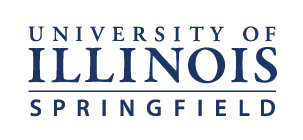“We worked in multidisciplinary teams for five weeks, either hours a day,” she said. “My job was to help sensitize them to the literature of African-Americans and to non-standard English and to provide multicultural supplemental materials.
“In history, we dealt with the Springfield Race Riot of 1908. The memory of it had been lost and needed to be understood. Many of these had no background dealing with African-American issues. And equally importantly, they would be dealing with white students who needed to have this kind of information –that there were (significant) African-American writers, for example.”
No other institution in Springfield, Everson said, was equipped to provide the multidisciplinary, multicultural training that SSU did.
“We made a difference,” she said. “School desegregation here went relatively uneventful. It might not have had this university not been here.”
Sangamon State has “made a difference” in virtually every aspect of life in Springfield since the school opened its doors to students 25 years ago – from the cold statistics of budgets and payrolls to subtler cultural, educational and social effect.
In simplest terms, SSU is a major part of the local economy. With a payroll of more than $24 million, more than 1,000 full- and part-time employees and an annual budget of nearly $35 million, the university is one of the largest employers in the area.
Perhaps an even greater contribution to the local economy can be found in the effect the university has had on the local work force. By providing convenient access to further education and train, SSU has made a vital, though hard to quantify, enhancement to the local employment pool.
More than 20,000 people have graduated from Sangamon State University, and almost double that number have taken at least a course there. Most of those alumni have remained in central Illinois.
“If there had been no Sangamon Sate, there is a tremendous number of workers who may not have gotten training,” said Michael Boer, executive director of the Greater Springfield Chamber of Commerce. “There are a number of (SSU) trained people in public sector jobs and many people in the business world who would not have been able to get degrees (without Sangamon State). To put it plain and simple, without SSU, the work force would not be as well-trained and productive as it is.”
George Hatmaker, former president of Franklin Life, said the presence of the university allowed his company to improve the quality of its employees.
“We paid the tuition for course affiliated with business,” Hatmaker said. “I’m sure it paid off for the company, although it’s awfully hard to measure. It helped a lot of people, it helped the company, and it made (employees) better able to handle their jobs.”
Educational access was particularly important for older students who came to SSU. “One of the great hallmarks of the university were the older students who had missed the boat, educationally speaking,” said Mike Lennon, a former faculty member who is now an administrator at Wilkes University in Pennsylvania. “There were Vietnam vets, housewives, divorcees. Sangamon State opened its arms to them in a way that conventional universities weren’t ready to do. It was the start f the adult education movement.” Sangamon State has had a major cultural impact on the city, as well, stemming from many different university programs and activities.
“The cultural quality of life is appreciably affected in a positive way by our public FM radio station and our 2,000 seat auditorium that brings world-class entertainment to the community,” Everson said. “If you look at the Prairie Capital Convention Center and the kind of entertainment its attracts, you see that we add something to the (entertainment) mix that is impressive and important.”
Everson said the SSU library – the “richest academic library in 50 miles” – supplements the cultural and educational resources of other area institutions.
“The library has a tremendous impact on the intellectual quality of life,” she said. Socially, SSU has changed the local community in ways that were not always welcome at the time. Dropping a pack of mostly liberal faculty members into the middle of a midwestern community caused some early “town and gown” problems, but also had positive long-term effects.
Many early faculty members were from the East Coast, Lennon said, and there were jokes about the locals coming and “counting the New York license plates,” with obvious disapproval.
As time passed, however staff members became more integrated into the Springfield community. There are very few institutions or organizations that have not been significantly influenced by (SSU) faculty or alumni or staff,’ said Cullom Davis, professor emeritus of history. “Groups such as Planned Parenthood, the American Civil Liberties Union, the NAACP and the Urban League have all been affected, influenced and strengthened by university people.”
Mary Jane Masters, a founding member of the state Board of Regents, SSU’s original governing board, said the coming of the university affected other local organization, as well.
“The League of Women voters grew like mad with (the influx of) women who were well-educationed and active,” Masters said. “The American Association of University Women also grew.”
SSU and the Southern Illinois University School of Medicine, which also opened in the early 1970s, “changed the whole town,” Masters said.
“It brought in different kinds of people – stirrer-uppers.” Masters said. “Springfield was a very rigid town. (The university) really loosened things up.”
Said Lennon: “Name a part of Springfield that hasn’t been influenced by Sangamon State. I don’t think you can find one.”


